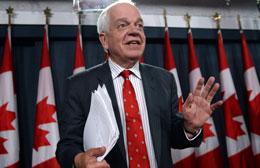India hails moves to reduce visa waiting times

Prospective immigrants to Canada from India are likely to increase under Ottawa’s new forecast of its intake of newcomers to the country in 2017 as targets for categories under which they are mostly admitted have been raised.
The forecasted drop in the intake of refugees means the quotas for the economic and family reunification classes will be enhanced reported the Hindustan Times.
Canada’s minister of immigration, refugees and citizenship John McCallum announced the 2017 immigration plan, the first of the Justin Trudeau government, after nationwide consultations. The government expects to welcome 300,000 new immigrants into Canada next year, the same figure as 2016.
In 2016, the target for the economic class – the category most used by Indian immigrants – was at 160,600. This has now been upped to 172,500. The family reunification class has been increased by 4,000 to 84,000.
Leading immigration lawyer Ravi Jain, of Toronto-based Green and Spiegel LLP, said: “This new target will benefit Indians as there will be more room to bring in Indian immigrants through both the family class and the economic stream.
“I have already seen a decrease in processing time for my Indian clients who are sponsoring spouses and I expect that parental sponsorships will be processed faster as well.”
The new plan could also be helpful for students from India, as Jain pointed out, “With the higher number of economic class immigrants coming in every year going forward, there will be room for the government to award higher points for Indian international students so that they can once again more smoothly transition to permanent residence.”
Data released for 2015 showed India was among the top two source countries for new permanent residents. With 39,530 admitted that year, a slight increase over 2014, Indians only trailed permanent residents from the Philippines.
The announcement comes as McCallum left for a week-long visit to India, during which he will travel to Amritsar, New Delhi and Chandigarh.
McCullum said in a statement, “The 2017 levels plan will put Canada in a strong position for the future and support our overall economic and social development as a country.”
While there were demands during the consultation process to increase the levels of immigration to 450,000 annually, Macullum settled on a figure that matched the one for 2016, partly due to a record influx of refugees, particularly from Syria.
In his statement introducing the immigration plan, McCallum said, “In 2017, economic immigration programs will see an overall increase of 7% over 2016. Immigrants with skills and experience are able to quickly contribute to the Canadian economy and society, improving life for the middle class as they help create jobs, spur innovation and strengthen communities.”
While in India, New Delhi is expected to raise with McCallum its concerns over restrictions on the movement of foreign skilled workers for short-term duration work, as these curbs are affecting the Indian IT industry.
Canada, U.K., the U.S, Germany and Switzerland are the top five markets for Indian IT firms. The annual revenue of Indian IT firms from the U.K. and Canadian markets is about $18 billion and $3 billion respectively, according to industry body Nasscom’s estimates.
Separate bilateral talks are slated for November 7, with Canada and Britain, on various issues, and workers movement is one among them. McCallum, is slated to meet External Affairs Minister Sushma Swaraj, Minister of State for Home Affairs Kiren Rijiju, and representatives of Nasscom, the IT trade body.
The Indian Commerce Ministry has also been briefed about the IT sector’s concerns. Mr. McCallum is likely to be joined by Laura Albanese, Minister of Citizenship and Immigration, Ontario and Lena Diab, minister of Immigration, Nova Scotia.
The Centre and Nasscom are expected to take up the issue of Canada’s plan to introduce a new short-duration work permit exemption for inter- and intra-company transferees and experts, among others, for work up to 30 days annually.
The IT industry feels this 30-day limit does not serve a purpose “too short a time frame” for the sector.
Nasscom welcomed the Canadian government’s plans to bring down visa and work permit processing times to two weeks from 3-4 weeks as part of the ‘Global Skills Strategy’ to attract foreign talent.
However, it said the processing time in itself was not a major concern.
During November 7 discussions, Nasscom will seek clarity from Canadian government officials on when the new plan will come into effect and whether Canada will be able to incorporate their demands in the Skills Strategy.
Under the ‘specialised knowledge’ category to avail exemption from Labour Market Impact Assessment (LMIA) in Canada, the employer will have to demonstrate that the employee (foreign worker) has the specialised skill and the requisite proprietary knowledge to carry out a certain task.
However, getting an LMIA exemption is difficult as about 20 per cent of applications are usually rejected.
Gagan Sabharwal, Director, Global Trade Development, Nasscom, said: “We feel a lot more needs to be done (by Canada) to realise the full potential by setting clear and objective criteria around ‘specialised knowledge’ in the ‘LMIA exempt category’ that has seen the rejection rate rise since these guidelines were introduced a couple of years ago.”
According to the Information and Communications Technology Council, Canada will face a shortage of more than 200,000 information, technology and communications workers by 2020.
Tech leaders have pressed the government for months to improve a drawn-out, bureaucratic immigration process that stretched between six months and a year to get skilled foreigners to come to Canada. Those waiting times, they complained, were far too long and their intended hires often accepted competing offers elsewhere instead, reported the Globe and Mail.









